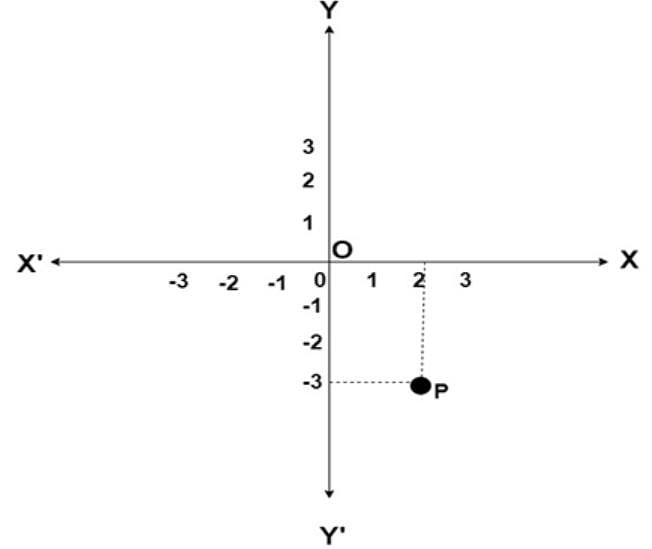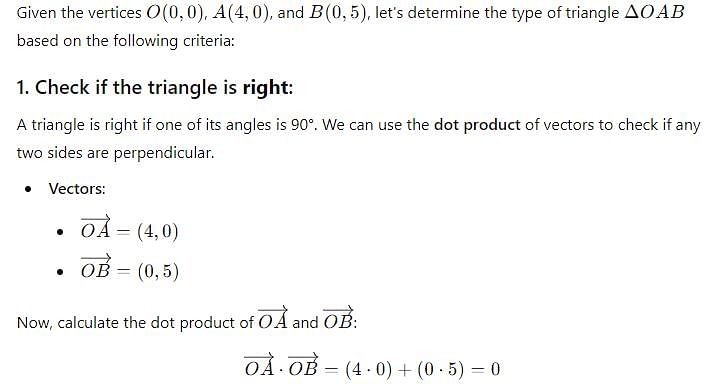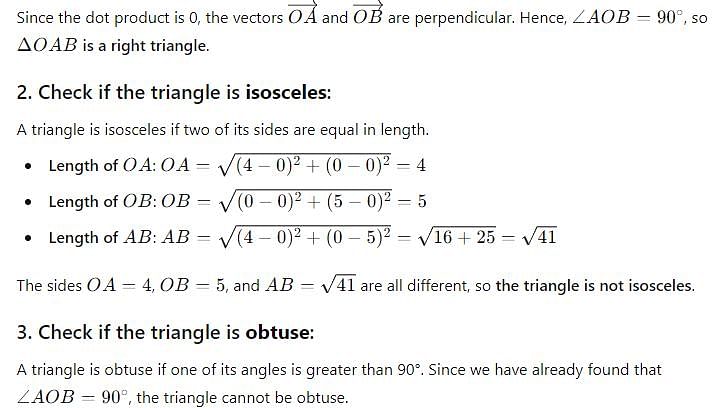Class 9 Exam > Class 9 Tests > Mathematics (Maths) Class 9 > Test: Coordinate Geometry - 1 - Class 9 MCQ
Test: Coordinate Geometry - 1 - Class 9 MCQ
Test Description
25 Questions MCQ Test Mathematics (Maths) Class 9 - Test: Coordinate Geometry - 1
Test: Coordinate Geometry - 1 for Class 9 2024 is part of Mathematics (Maths) Class 9 preparation. The Test: Coordinate Geometry - 1 questions and answers have been
prepared according to the Class 9 exam syllabus.The Test: Coordinate Geometry - 1 MCQs are made for Class 9 2024 Exam. Find important
definitions, questions, notes, meanings, examples, exercises, MCQs and online tests for Test: Coordinate Geometry - 1 below.
Solutions of Test: Coordinate Geometry - 1 questions in English are available as part of our Mathematics (Maths) Class 9 for Class 9 & Test: Coordinate Geometry - 1 solutions in
Hindi for Mathematics (Maths) Class 9 course. Download more important topics, notes, lectures and mock
test series for Class 9 Exam by signing up for free. Attempt Test: Coordinate Geometry - 1 | 25 questions in 45 minutes | Mock test for Class 9 preparation | Free important questions MCQ to study Mathematics (Maths) Class 9 for Class 9 Exam | Download free PDF with solutions
Detailed Solution for Test: Coordinate Geometry - 1 - Question 1
Test: Coordinate Geometry - 1 - Question 2
A point both of whose co-ordinates are positive lies in
| 1 Crore+ students have signed up on EduRev. Have you? Download the App |
Test: Coordinate Geometry - 1 - Question 3
From the given diagram, the coordinates of point P are ______.


Detailed Solution for Test: Coordinate Geometry - 1 - Question 3
Detailed Solution for Test: Coordinate Geometry - 1 - Question 4
Test: Coordinate Geometry - 1 - Question 5
The point which lies on y-axis at a distance of 6 units in the positive direction of y-axis is
Detailed Solution for Test: Coordinate Geometry - 1 - Question 5
Detailed Solution for Test: Coordinate Geometry - 1 - Question 6
Test: Coordinate Geometry - 1 - Question 7
A point both of whose co-ordinates are negative lies in
Detailed Solution for Test: Coordinate Geometry - 1 - Question 8
Detailed Solution for Test: Coordinate Geometry - 1 - Question 9
Test: Coordinate Geometry - 1 - Question 10
The point which lies on x-axis at a distance of 4 units in the negative direction of x-axis is
Detailed Solution for Test: Coordinate Geometry - 1 - Question 10
Test: Coordinate Geometry - 1 - Question 15
The point which lies on x-axis at a distance of 3 units in the positive direction of x-axis is
Detailed Solution for Test: Coordinate Geometry - 1 - Question 16
Test: Coordinate Geometry - 1 - Question 20
The points A(-2, 3), B(-2, -4) and C(5, -4) are the vertices of the square ABCD, the n the co-ordinates of the vertex D are
Test: Coordinate Geometry - 1 - Question 21
Find the co-ordinates of the point equidistant from the points A(1, 2), B(3, -4) and C(5, -6).
Detailed Solution for Test: Coordinate Geometry - 1 - Question 21
Test: Coordinate Geometry - 1 - Question 25
If O(0, 0), A(4, 0) and B(0, 5) are the vertices of a triangle, then ΔOAB is
Detailed Solution for Test: Coordinate Geometry - 1 - Question 25
|
44 videos|412 docs|54 tests
|
Information about Test: Coordinate Geometry - 1 Page
In this test you can find the Exam questions for Test: Coordinate Geometry - 1 solved & explained in the simplest way possible.
Besides giving Questions and answers for Test: Coordinate Geometry - 1, EduRev gives you an ample number of Online tests for practice
|
44 videos|412 docs|54 tests
|
Download as PDF





















